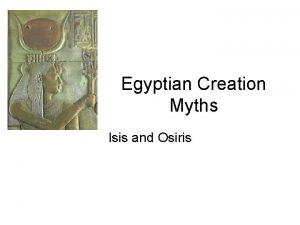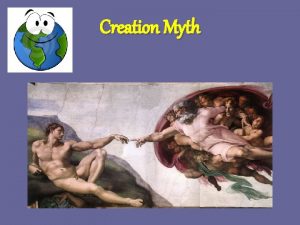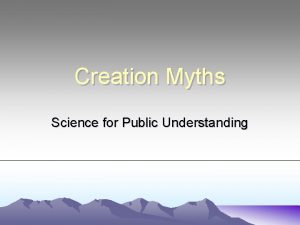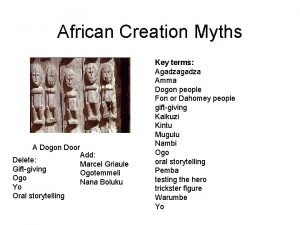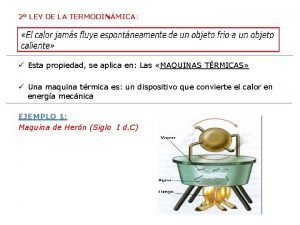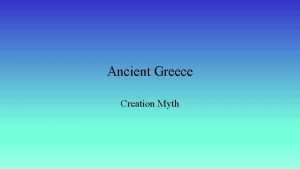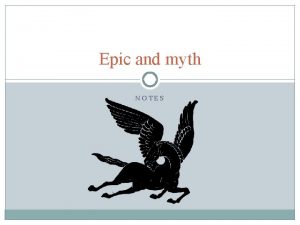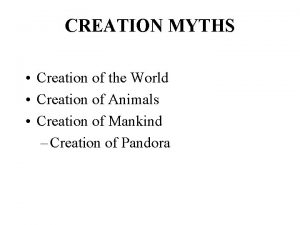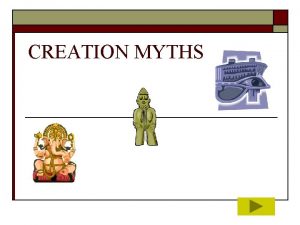Japan 400 1200 Creation Myth Origins of Japan
















- Slides: 16

Japan 400 - 1200

Creation Myth Origins of Japan. Brother and sister gods, Izanagi & Izanami dipped a spear in the churning sea. When they pulled it out, the drops of brine that fell upon the water’s surface became the islands of Japan. The two gods then created the sun goddess, Amaterasu, and sent her to heaven to rule over the world.

Religion’s Influence Japan has a strong history of the Shinto religion. The word Shinto means, “Way of the Gods”. They worship the Kami, which is nature and all forces of nature – seen and unseen.

400’s Yamato Clan: First and only dynasty to rule Japan. Current emperor is descendent of that clan. Clan claimed emperor was a direct descendent of the Sun goddess, Amaterasu.

500’s Buddhist missionaries went to Japan and brought religion and Chinese culture. Most Japanese were Shinto and Buddhist believers simultaneously.

600’s Huge Chinese influence led to the Taika Reforms. Bureaucratic and legal reforms modeled on the Tang dynasty of China. Japan became, “Little China” – except NO Confucianism or civil service exams. In Japan, education was not nearly as important as birth status.

800’s Heian Period Chinese influence abated and power of aristocratic families increased. Fugiwara family intermarried with the Yamato clan – and power shifted to the Fugiwara family. This was a golden age for Japanese literature.

1100’s Power in Japan spread upon a larger and larger pool of noble families, and soon they were fighting with each other for control over their small territories. Japan had devolved into a feudal system not unlike the one in Europe.

Japanese Feudalism I. The military governments (shogunates) lasted from 1185 -1867 II. Hierarchy of power A. The emperor’s role was mainly ceremonial B. The real power was in the hands of the shoguns (generals) but later passed to those beneath him. C. Daimyo were landowners with samurai beneath them.

D. The samurai pledged their loyalty and gave military service to their daimyo. 1. The samurai followed the Code of Bushido: a. a strict code of discipline which demanded that they commit suicide if dishonored. (Seppeku) b. Loyalty to one’s lord c. skill in the arts of war 2. The samurai fought on horseback with bows, arrows, and swords 3. Women could also be samurai



E. Farmers worked on daimyo estates, paying high taxes in exchange for protection F. Buddhism and Shintoism were popular religions with the samurai following Zen Buddhism (discipline and meditation) G. In the 1500 s, the Portuguese introduced firearms and it’s believed they may have introduced moats and castles with stone walls to Japan

III. Once towns developed, there were four main social classes (listed in order of power/status) in the Medieval Period of Japan: A. Samurai (warrior) B. Farmer 1. They had higher social power but lower economic power than those below them 2. They paid heavy taxes and were not permitted to leave the land C. Craftsmen D. Merchant


Comparing European & Japanese Feudalism Chart
 600+800+800
600+800+800 Ennead of heliopolis
Ennead of heliopolis Oldest creation myth
Oldest creation myth Australian aboriginal creation myth
Australian aboriginal creation myth Pueblo creation myth
Pueblo creation myth Boshongo mythology
Boshongo mythology Creation myth definition
Creation myth definition Dogon creation myth
Dogon creation myth 29cfr1910.1200
29cfr1910.1200 Aquaguard ag 1200
Aquaguard ag 1200 Diketahui koordinat kutub. a
Diketahui koordinat kutub. a Mesopotamia jeopardy
Mesopotamia jeopardy Htl wien 20
Htl wien 20 Marine de dardel
Marine de dardel 29 cfr 1910 section 1200
29 cfr 1910 section 1200 Eficiencia de carnot
Eficiencia de carnot Cps 1200
Cps 1200

